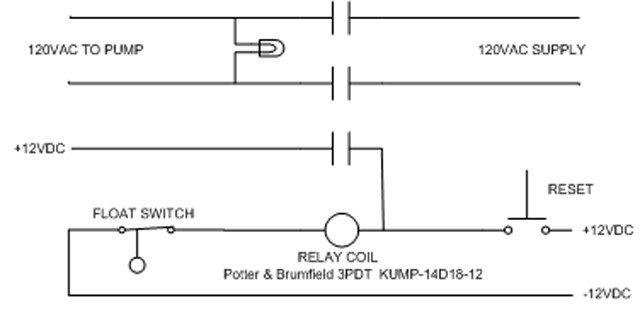rwidman wrote:
.......... Tim, yes, all the septic float switches are NC, designed to open when the float moves up past hortizontoal and turn the pump off. ............
I have never seen, nor heard of a float switch in a septic tank and I lived in a home with a septic tank for 23 years. Any pump for a septic tank would have to pump sewage and where would it pump it to?
Perhaps people are thinking of a "sump", commonly installed in basements to collect seepage or rain waiter and the float switch that operates the pump or "sump pump".
Regardless, it seems to me that making sure that all hoses and underwater fittings are high quality and well maintained would be sufficient to protect the boat. Shutting the seacocks would be an added assurance. Sinking of boats because of air conditioning hoses coming loose or breaking doesn't seem to be a common cause of boats sinking.
Once we start thinking of 12 volt switches operating relays to switch 120 volt circuits, latching relays, and reset switches, we end up with a lot of fault posibilities and something only the original installer can understand. And remember, if you shut off the water flow to the AC unit, you should be thinking about shutting it down as well so as not to damage it. That's another relay (or contact). And don't even think about using the same relay to switch 12 volt and 120 volt circuits.

